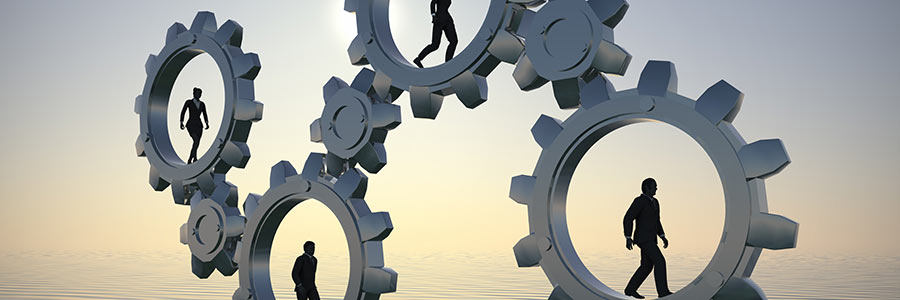
THE VALUE OF TRAINING YOUR ENTIRE TEAM (INCLUDING THE OWNER)
When I came to work for Terry Keller at Keller Bros. Auto Repair, he was doing 65 cars a day with an average repair order of around $80. Customers were always angry, and it led to a ridiculous level of turnover. One year, his accountant had to prepare 102 W2s.
I hope none of this sounds familiar to you. I hope you’ve never felt like the team was working against you or that you’re completely alone, but I’ve worked with enough shop owners to know that this is all too common.
Fixing these kinds of problems isn’t easy. It requires changing the culture in your shop, and it means firing your customer base and attracting quality people whose trust you want to earn.
But before any of that can happen — before you overhaul your marketing, before you change the culture — you have to build a team around you that wants you to succeed. Which means that you need a team of employees who know what they’re responsible for, understand how to fix those things, have the authority to fix them, and know how they’re doing each day.
Better Employees
At a bare minimum, training is key to finding and retaining quality people. I can’t tell you how many shop owners I’ve talked to who were convinced there were no good employees in their area. They could find skilled techs and experienced service advisors, sure, but they weren’t good employees.
In nearly every case, the problem wasn’t the techs or advisors. It was that the owner wanted to hire a psychic tech or a psychic service advisor. That shop owner would never sit down in a restaurant and simply expect the waiter to bring them the dish they wanted without ordering, but they were doing exactly that when they hired their employees. They would expect the employee to show up on day one and understand the policies and procedures that made the shop run smoothly without ever training them!
Training for new employees is a good start, but it’s far from the whole picture. Does the rest of the team understand your expectations? Do they know who is responsible for holding other techs accountable? Are they incentivized for meeting and exceeding expectations?
Training in policies and procedures isn’t about one person or one group. It’s about the whole shop and how each policy and procedure protects the entire company.
It’s amazing what barriers can do in a shop. When we had to erect a firewall that divided our bays in our shop, our techs started calling themselves the “East-siders” and “West-siders” within days. We had to create games just to get the two sides to work together as one team!
Chances are your shop has some kind of divider between the front desk and the bays that severs communication between the advisors and techs, and another between the owner’s office and the rest of the team. This is why training for the entire team is so important.
When this happens, the owner gets stuck in the role of a drill sergeant. When you feel like you need to crack the whip and look over the shoulder of each employee in order for the work to get done, it becomes you versus them, and it starts to feel like you’re doing all of the pulling by yourself.
When service advisors deliver exceptional customer service, customers are happier. When customers approve more jobs, technicians stay busy and productive. When technicians bill more hours, the shop grows and everyone on the team can make more money.
That’s the power of training the entire team.
Grow Your Shop
The accountability that makes this training stick is nothing without measurement. At Keller Bros, I know that our inspection and estimate training works because I measure every inspection. I have confidence that my team is following the training because I see the numbers improve every day.
The only way to make training stick is to measure and hold the team accountable. Every day, every time.
Does that kind of constant accountability and measurement seem like a lot of work?
In our shop, we went from 65 cars per day to 30, and our average repair order went from $80 to $450. Terry Keller went from micromanager to remote manager and the shop grew from $1.5 million to $3.5 million. Same shop, same location, but better team, better customers and better systems.
View “The Value of Training Your Entire Team (Including the Owner)” by David Rogers
You can also download a PDF version of this article here.

